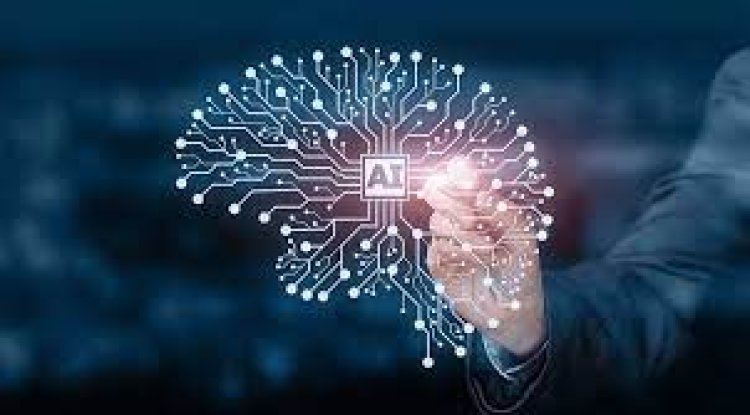AI Detector The Guardian of Digital Authenticity
An ai detector is a digital tool designed to analyze content and determine whether it was created by artificial intelligence.

In a world where artificial intelligence is becoming more advanced every day, the line between human-created and machine-generated content is starting to blur. Whether it’s an essay, an article, an image, or even a voice recording, AI can now mimic human creativity with astonishing accuracy. That is exactly why the ai detector has become such an essential tool. It acts like a digital guardian—scanning content, spotting patterns, and revealing whether something was crafted by a human or a machine.
What is an AI Detector?
An ai detector is a digital tool designed to analyze content and determine whether it was created by artificial intelligence. It studies sentence structure, word patterns, predictability, repetition, and statistical probabilities behind the text. Unlike simple plagiarism checkers, an ai detector doesn’t search the internet for copies—it studies the writing style itself.
These tools are especially useful for schools, businesses, publishers, journalists, and content creators who want to ensure originality and transparency in what they present to the world.
Why the AI Detector Matters in Today’s Digital Era
With AI-generated content becoming increasingly common, the need for trust and authenticity has grown stronger than ever. The ai detector helps maintain that trust. Here’s why it matters:
- Academic Integrity – Teachers and professors can check if assignments are genuinely written by students.
- Content Authenticity – Blogs, news websites, and publishers use ai detector tools to ensure content is human-crafted.
- Brand Reputation – Companies avoid AI-generated misinformation or low-quality writing by verifying content.
- Security and Ethics – AI-generated deepfakes, fake reviews, or auto-generated social media posts can be detected before causing harm.
How an AI Detector Works Behind the Scenes
Even though it seems like magic, an ai detector uses science and data to get results. Here’s how it works:
- Input Analysis – The user adds a piece of text or file into the ai detector.
- Pattern Recognition – The tool compares sentence structure, tone, and wording to common AI writing styles.
- Probability Scoring – It calculates a percentage showing whether the content is AI-generated or written by a human.
- Detailed Report – Some advanced ai detector tools highlight specific parts of the text where AI usage is suspected.
What AI Detector Tools Look For
To detect AI-generated content, an ai detector looks for:
- Perplexity and Burstiness – AI tends to write smoother, more predictable sentences, while humans write with variety and emotion.
- Repetitive Patterns – AI often repeats ideas or structures.
- Overly Formal or Robotic Tone – AI content sometimes lacks human imperfections.
- Lack of Personal Experience – AI does not express real memories or genuine emotions.
Where AI Detector Tools Are Most Useful
The beauty of an ai detector is that it works across multiple fields. Let’s explore where it makes a real impact:
Education
Teachers use an ai detector to ensure essays, research papers, and exams are truly written by students, not artificially generated.
Media and Journalism
In newsrooms, editors rely on AI detector tools to avoid publishing false or AI-generated misinformation.
Freelancing and Content Writing
Clients verify that writers are sending original, human-written work by scanning it through an ai detector.
Corporate Sector
Businesses use ai detector software to check reports, emails, product descriptions, and marketing copies before publishing.
Benefits of Using an AI Detector
Using an ai detector brings several advantages:
- Promotes originality and honesty
- Protects intellectual property
- Builds trust between creators and consumers
- Reduces fake news, spam, and misinformation
- Helps educators maintain academic ethics
Limitations of an AI Detector
Although powerful, no ai detector is perfect. Here are some common challenges:
- False Results – Sometimes human content may be marked as AI and vice versa.
- Advanced AI Models – New AI systems like GPT-5 or beyond write in more human-like ways, making detection harder.
- Language and Cultural Variations – Some languages or writing styles may confuse ai detector algorithms.
- Evasion Techniques – People may modify AI-generated content to bypass detectors.
Tips to Write Content That Passes AI Detector Tools (Honestly and Humanly)
If you want to write naturally human content that feels authentic, here’s how:
- Use personal stories or real-life examples
- Add emotions, opinions, and imperfections
- Vary sentence lengths and tone
- Avoid unnatural repetition or overly formal structure
Future of AI Detectors: Smarter and More Powerful
As AI evolves, the AI detector will evolve too. In the future, these tools may scan not just text, but also AI-generated voice, video, music, and even digital artwork. The goal is not to stop AI, but to ensure AI is used responsibly and ethically.
Conclusion
The ai detector is more than a digital tool—it is a bridge between technology and truth. In a world full of artificial content, it protects authenticity, encourages creativity, and ensures trust. Whether you're a student, teacher, business owner, or writer, using an ai detector helps you stay honest, original, and confident in your work.


 Fearyprovider
Fearyprovider 



















